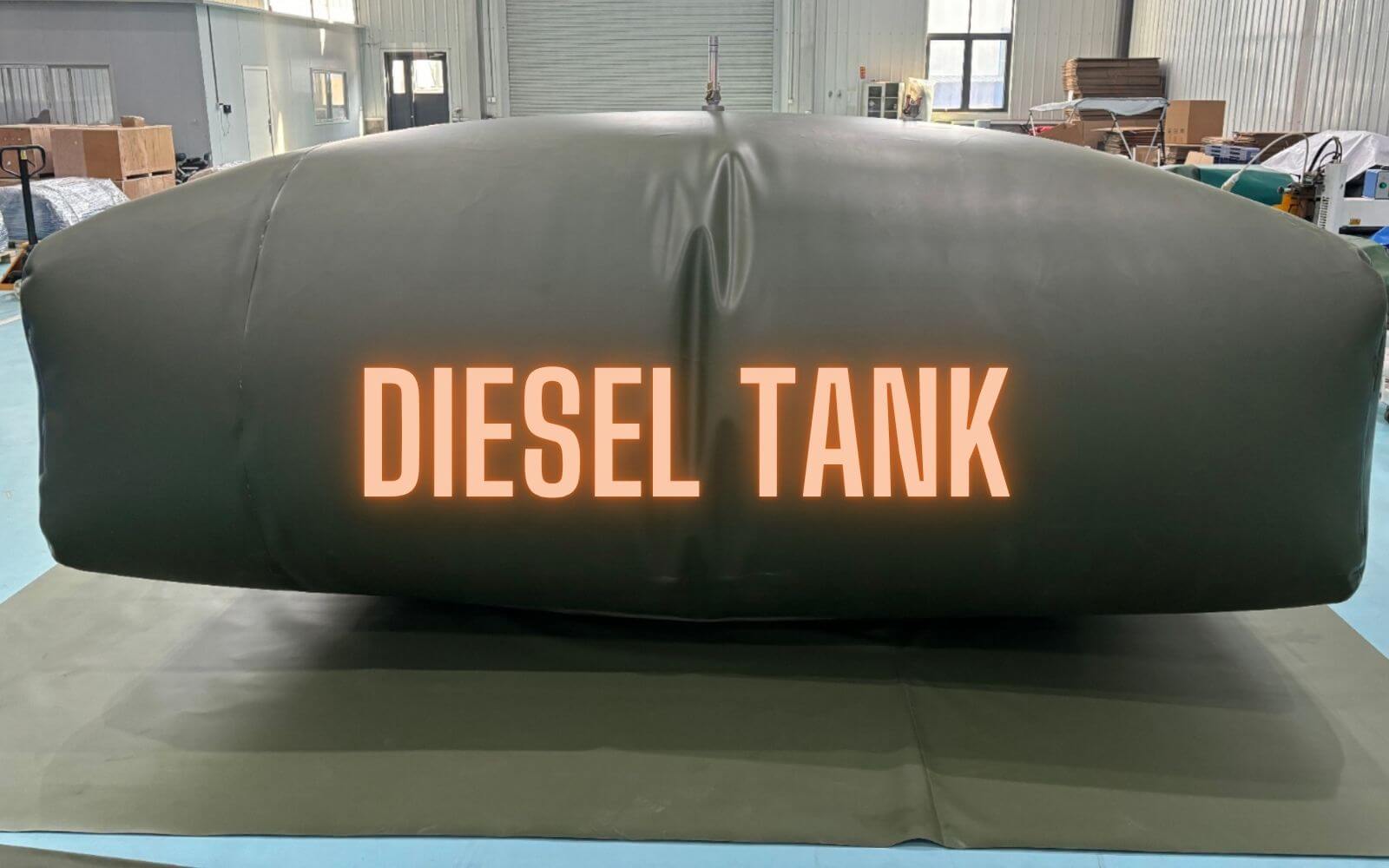DIESEL TANK
For industries, farms, and commercial operations relying on diesel fuel, choosing the right diesel tank is critical for efficiency, safety, and cost savings. Whether you need long-term stationary storage or portable fuel solutions, understanding tank types, materials, and applications ensures optimal performance.
In this guide, we’ll cover:
What diesel tanks are and their primary functions
Different types (above-ground, underground, portable, flexible)
Material comparisons (steel, polyethylene, fiberglass, TPU)
Why flexible diesel tanks are gaining popularity
Key applications across different industries
After this artilce, you’ll find how to select the best diesel tank for your specific needs.
What Is a Diesel Tank?
A diesel tank is a type of storage container designed to hold diesel fuel while protecting it from contamination, evaporation, and environmental damage, safely. These tanks vary in size, material, shape, and specific designs, depending on their various applications:
✔ Above-ground tanks – Installed on surfaces of ground for easy access, observe, and process.
✔ Underground tanks – Buried to save space and reduce fire risks, especially for the bulk disel storage application cases.
✔ Portable tanks – Mobile solutions for job sites, mostly for small capacity requested for emergency situations.
✔ Flexible bladders – Collapsible tanks for temporary or remote storage which needs the quick reponse and fast deployment.
Key Functions of Diesel Tanks
Prevent fuel degradation (water, microbial growth). Storing deisel in an isolation condition is the purpose of the of using storage containe to maintain its quality and usability over time.
Meet safety regulations (CE, ISO), the safety for fuel storage should be considered in advance, the certificate can give confidence to users.
Enable efficient fuel dispensing (pumps, gauges, vents). Suitable fittings for diesel storage tanks can meet the various requirements from different applications.
Types of Diesel Tanks
1. Above-Ground Diesel Tanks
Best for: Farms, construction sites, backup generators
Pros:
Easy installation & maintenance
Lower installation cost than underground tanks
Cons:
Vulnerable to weather, the UV cause the damage to tanks
Requires spill containment, the TPU flexible spill containment can solve the problem.
2. Underground Diesel Tanks
Best for: Gas stations, long-term industrial storage
Pros:
Space-saving (no surface footprint)
Reduced fire hazard
Cons:
Higher installation cost (excavation, permits)
Harder to inspect for leaks
3. Portable Diesel Tanks
Best for: Construction, mining, emergency fuel supply
Pros:
Mobile (skid-mounted or on trailers)
No permanent installation needed
Cons:
Smaller capacities (typically 50–1,000L)
Requires frequent refilling
4. Flexible Diesel Tanks (Fuel Bladders)
Best for: Military, disaster response, remote sites
Pros:
Lightweight & foldable (saves 90% space when empty)
No corrosion (unlike steel tanks)
UV-resistance, can use indoor and outdoor.
Rapid deployment (usable within hours)
Cons:
Shorter lifespan than rigid tanks (~10 years)
Not ideal for permanent installations
Diesel Tank Materials Compared
| Material | Pros | Cons | Best For |
| Steel | Durable, high capacity | Prone to rust, heavy | Industrial/long-term storage |
| Polyethylene | Corrosion-proof, affordable | UV degradation over time | Farms, small businesses |
| Fiberglass | Chemical-resistant, long lifespan | Expensive, hard to repair | Marine/harsh environments |
| Flexible TPU | Lightweight, portable, no corrosion | Not for high-pressure use | Military, mining, emergency fuel |
Why Flexible Diesel Tanks (TPU) Are Gaining Popularity
✅ Portability – Deploy in remote locations without cranes
✅ Cost-effective – 40–60% cheaper than steel tanks
✅ Custom shapes – Fit awkward spaces (vehicle beds, ship holds)
✅ Easy maintenance – No rust, simple cleaning
Key Applications of Diesel Tanks
1. Agriculture & Farming
Fuel storage for tractors and harvesters
Bulk order on the fuel can save money than ordinary orders.
2. Construction & Mining
On-site refueling of heavy machinery
Flexible bladders for temporary sites
3. Emergency Power Backup
Hospitals, data centers, remote project fuel supply chain.
Storm preparedness (hurricane-prone areas)
4. Transportation & Logistics
Trucking fleets (depot storage)
Marine vessels (diesel bunkering)
5. Military & Disaster Relief
Rapid-deploy fuel bladders for field operations
Forward operating bases (JP-8 fuel compatibility)
How to Choose the Right Diesel Tank
1. Assess Your Fuel Needs
Daily usage → Determines tank capacity
Refill frequency → Impacts size (e.g., 5,000L vs. 20,000L)
2. Consider Location & Regulations
Above-ground: Check local fire codes
Underground: EPA leak detection requirements
3. Prioritize Safety Features
Secondary containment (for spills)
Venting & grounding (static electricity prevention)
4. Compare Materials
Steel for permanent, high-capacity needs
Polyethylene for budget-friendly, low-maintenance
Flexible TPU for portability and temporary use
Final Recommendation
For most industrial and agricultural uses, polyethylene or steel tanks offer the best balance of durability and cost. However, flexible diesel tanks (TPU) are ideal for:
✔ Remote job sites
✔ Emergency fuel reserves
✔ Military/logistics operations.








